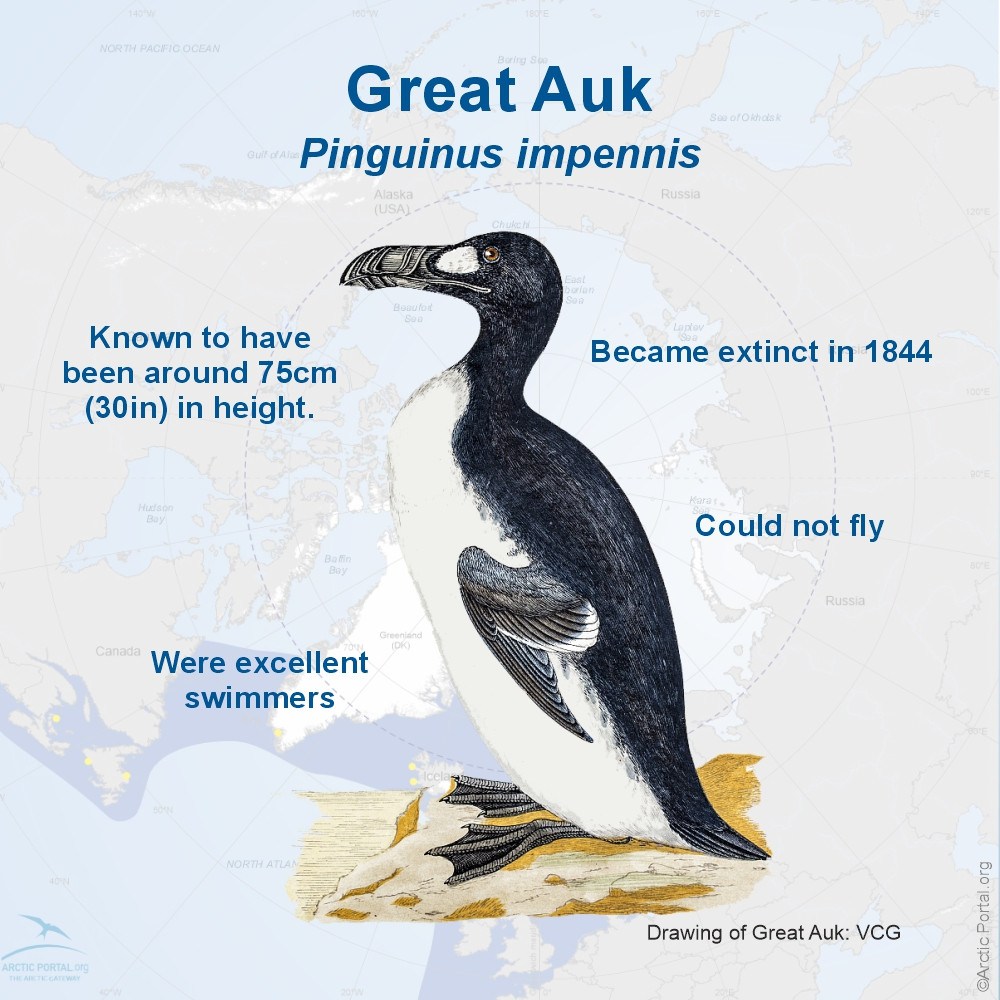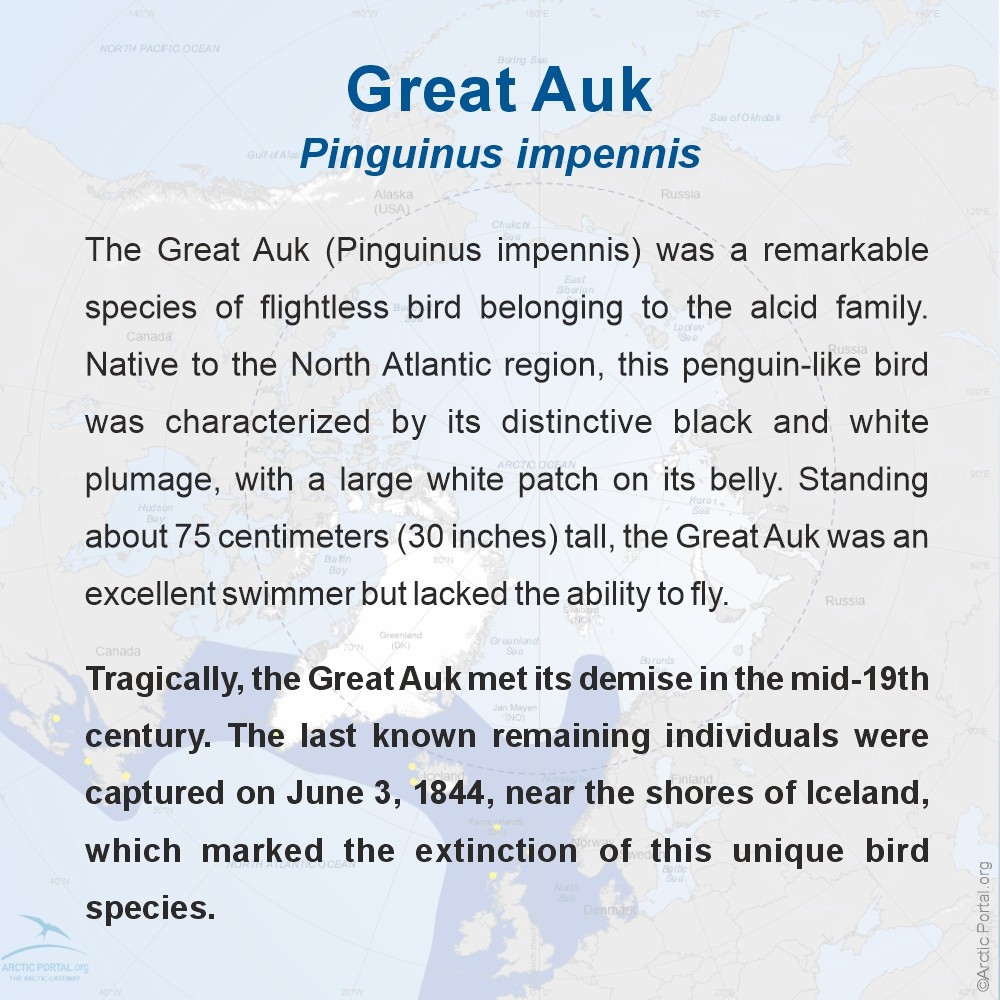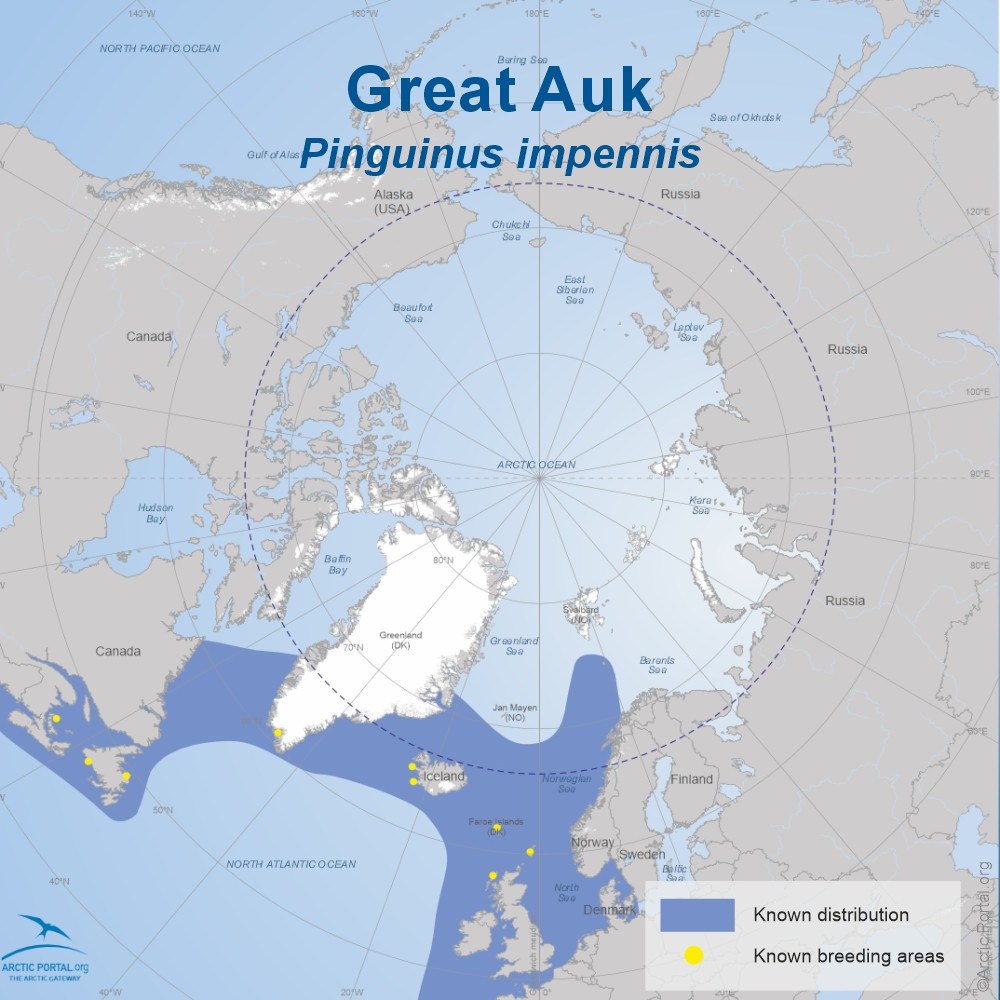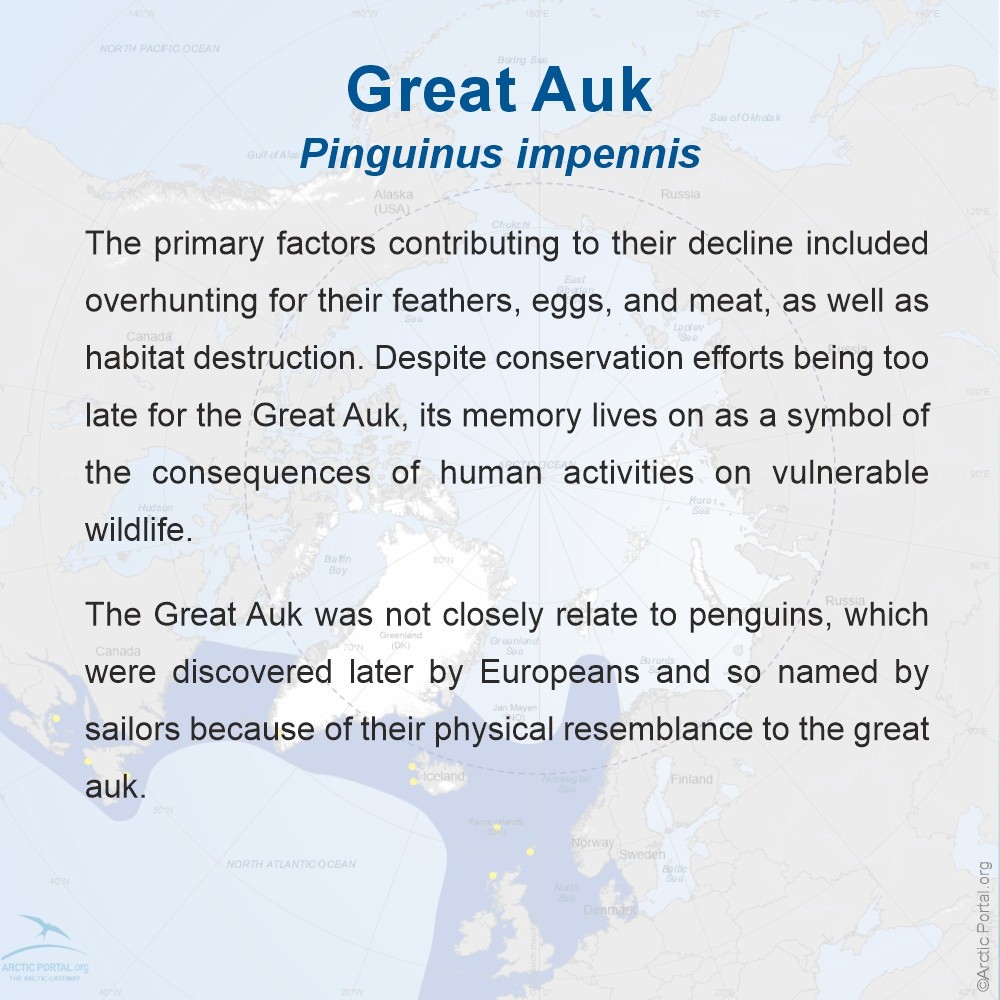The Great Auk (Pinguinus impennis) was a remarkable species of flightless bird belonging to the alcid family. Native to the North Atlantic region, this penguin-like bird was characterized by its distinctive black and white plumage, with a large white patch on its belly.
The Great Auk (Pinguinus impennis) was a remarkable species of flightless bird belonging to the alcid family. Native to the North Atlantic region, this penguin-like bird was characterized by its distinctive black and white plumage, with a large white patch on its belly. Standing about 75 centimeters (30 inches) tall, the Great Auk was an excellent swimmer but lacked the ability to fly.
Tragically, the Great Auk met its demise in the mid-19th century. The last known remaining individuals were captured on June 3, 1844, near the shores of Iceland, which marked the extinction of this unique bird species.
The primary factors contributing to their decline included overhunting for their feathers, eggs, and meat, as well as habitat destruction. Despite conservation efforts being too late for the Great Auk, its memory lives on as a symbol of the consequences of human activities on vulnerable wildlife.
The Great Auk was not closely related to penguins, which were discovered later by Europeans and so named by sailors because of their physical resemblance to the great auk.
See also our map of Great Auk known distribution and breeding places
Visit our Map Gallery Arctic Portal specializes in creating customized graphical maps that cover a range of significant Arctic topics with global recognition. We are continuously working on new maps and adding them to our Gallery.










